Discover 35 hidden attractions, cool sights, and unusual things to do in Tokyo (Japan). Don't miss out on these must-see attractions: National Museum of Western Art, Tokyo National Museum, and Imperial Palace. Also, be sure to include The National Art Center in your itinerary.
Below, you can find the list of the most amazing places you should visit in Tokyo (Tokyo).
Table of Contents
National Museum of Western Art
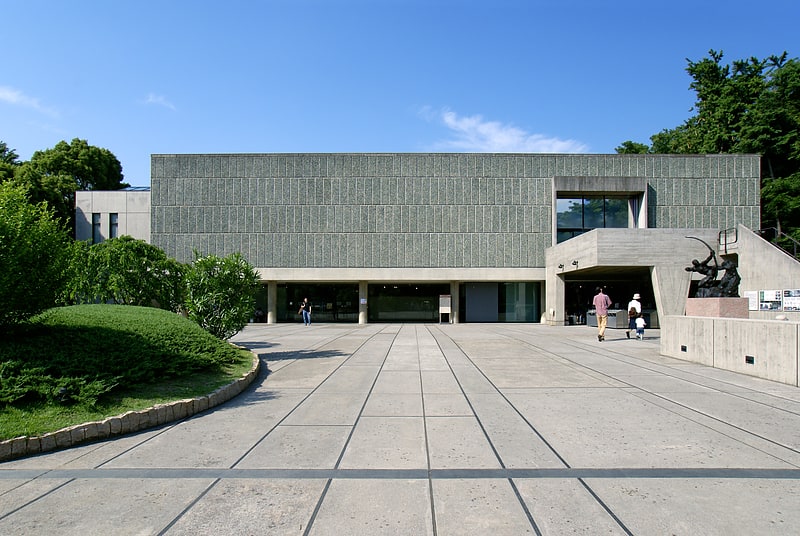
Also known as: 国立西洋美術館
National museum for western art. The National Museum of Western Art is the premier public art gallery in Japan specializing in art from the Western tradition.
The museum is in the museum and zoo complex in Ueno Park in Taito, central Tokyo. It received 1,162,345 visitors in 2016.[1]
Address: 7-7 Uenokōen, Taitō-ku, 110-0007 Tokyo (台東区)
Tokyo National Museum

Also known as: 東京国立博物館
Grand site for Japanese art and antiques. The Tokyo National Museum or TNM is an art museum in Ueno Park in the Taitō ward of Tokyo, Japan. It is one of the four museums operated by the National Institutes for Cultural Heritage, is considered the oldest national museum in Japan, is the largest art museum in Japan, and is one of the largest art museums in the world. The museum collects, preserves, and displays a comprehensive collection of artwork and cultural objects from Asia, with a focus on ancient and medieval Japanese art and Asian art along the Silk Road. There is also a large collection of Greco-Buddhist art. The museum holds over 110,000 Cultural Properties, including 89 National Treasures of Japan, 319 Horyuji Treasures, and 644 Important Cultural Properties. In addition, the museum houses over 3000 Cultural Properties deposited by individuals and organizations, including 55 national treasures and 253 important cultural properties. The museum also conducts research and organizes educational events related to its collection.
The facilities consist of the Honkan, holding the Japanese Gallery; the Heiseikan and Hyokeikan, holding special exhibitions; the Toyokan, holding the Asian Gallery; the Gallery of Horyuji Treasures, holding important relics originally preserved at Nara's Horyu Temple; the Kuroda Memorial Hall, holding a collection of works by Kuroda Seiki; and the Research and Information Center. There are restaurants and shops within the museum's premises, as well as outdoor exhibitions (including the Kuromon) and a garden where visitors can enjoy seasonal views.
TNM stores Japanese cultural properties of modern art, archaeology and ethnology, and cultural properties donated by the imperial family to the state, but more of them owned by the state are further stored in the three National Museum of Modern Art, the National Museum of Japanese History and the Museum of the Imperial Collections. Western art outside the jurisdiction of TNM is housed in the National Museum of Western Art.[2]
Address: 13-9 Uenokōen, Taitō-ku, 110-8712 Tokyo (台東区)
Imperial Palace

Also known as: 皇居
Emperor's residence with gardens and tours. The Tokyo Imperial Palace is the main residence of the Emperor of Japan. It is a large park-like area located in the Chiyoda district of the Chiyoda ward of Tokyo and contains several buildings including the Fukiage Palace where the Emperor has his living quarters, the main palace where various ceremonies and receptions take place, some residences of the Imperial Family, an archive, museums and administrative offices.
It is built on the site of the old Edo Castle. The total area including the gardens is 1.15 square kilometres (0.44 sq mi). During the height of the 1980s Japanese property bubble, the palace grounds were valued by some to be more than the value of all of the real estate in the U.S. state of California.[3]
Address: Tokyo, 1-1 Chiyoda, Chiyoda-ku 100-0001 Tokyo
The National Art Center
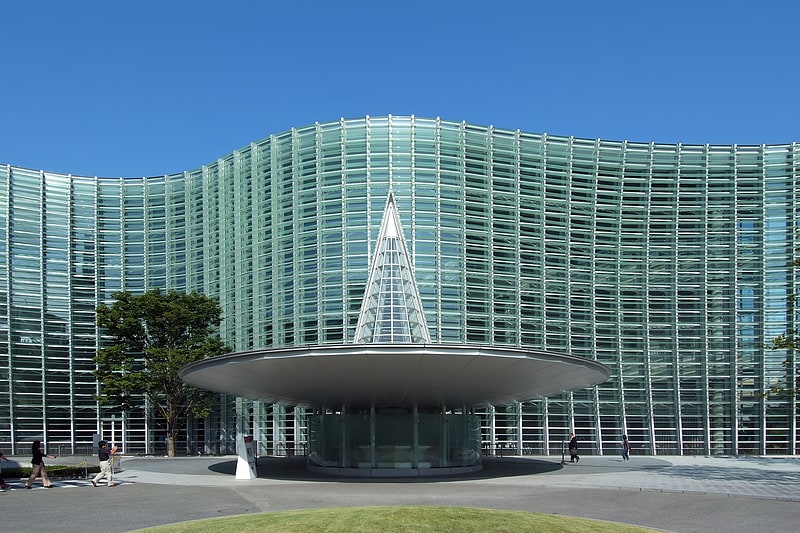
Also known as: 国立新美術館
Museum in the special wards of Tokyo, Japan. The National Art Center is a museum in Roppongi, Minato, Tokyo, Japan. A joint project of the Agency for Cultural Affairs and the National Museums Independent Administrative Institution, it stands on a site formerly occupied by a research facility of the University of Tokyo.
The building has been designed by Kisho Kurokawa. It is one of the largest exhibition spaces in the country. Access is from Nogizaka Station on the Tokyo Metro Chiyoda Line.
Unlike Japan's other national art museums, NACT is an 'empty museum', without a collection, permanent display, and curators. Like Kunsthalle in German-speaking regions, it accommodates temporary exhibitions sponsored and curated by other organizations. The policy has been successful. In its first fiscal year in 2007, it had 69 exhibitions organized by arts groups and 10 organized by NACT. Its Monet exhibition, held between 7 April and 2 July 2007, was the second most visited exhibition of the year, not only in Japan but in the world.
Its graphic visual identity was developed by graphic designer Kashiwa Sato of Tokyo-based Samurai Inc.[4]
Address: 7-chōme-22-2 Roppongi, Minato City, 106-8558 Tokyo (港区)
Tsukiji Fish Market
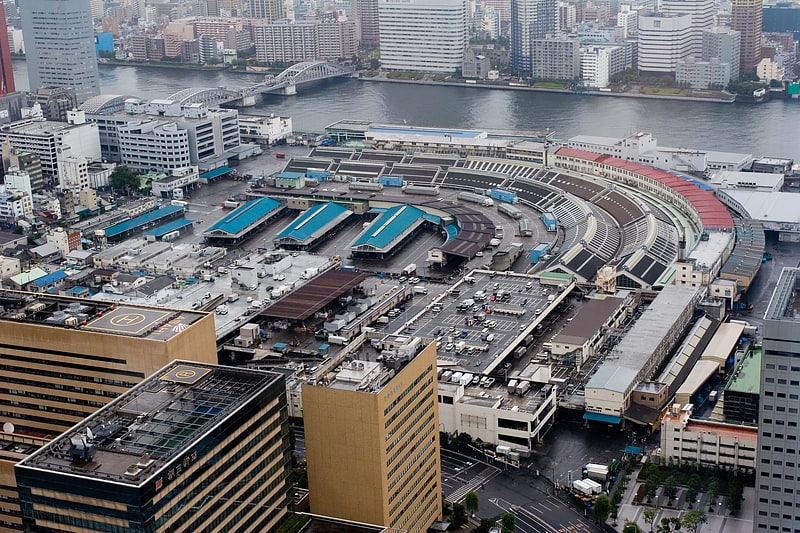
Also known as: 築地市場
Fish market with an extensive selection. The Tsukiji Market, supervised by the Tokyo Metropolitan Central Wholesale Market of the Tokyo Metropolitan Bureau of Industrial and Labor Affairs, was the largest wholesale fish and seafood market in the world. It was also one of the largest wholesale supermarkets of any kind. The market opened on 11 February 1935 as a replacement for an older market that was destroyed in the 1923 Great Kantō earthquake. It was closed on 6 October 2018, with operations moving to the new Toyosu Market.
The market was located in Tsukiji in central Tokyo between the Sumida River and the upmarket Ginza shopping district. When the inner wholesale market was operational, it offered only restricted access to visitors. While the inner wholesale market has closed, the outer retail market, restaurants, and associated restaurant supply stores remain operational, and the area is still a major tourist attraction for both domestic and overseas visitors.[5]
Address: 5-2-1 Tsukiji, Tokyo (中央区)
Tokyo Tower
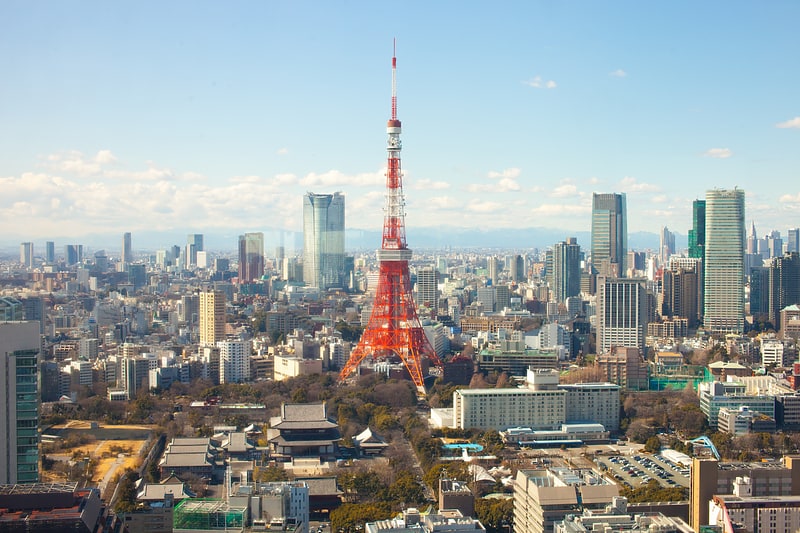
Also known as: 東京タワー
Well-known tower with observation areas. The Tokyo Tower is a communications and observation tower in the Shiba-koen district of Minato, Tokyo, Japan, built in 1958. At 332.9 meters, it is the second-tallest structure in Japan. The structure is an Eiffel Tower-inspired lattice tower that is painted white and international orange to comply with air safety regulations.
The tower's main sources of income are tourism and antenna leasing. Over 150 million people have visited the tower. FootTown, a four-story building directly under the tower, houses museums, restaurants, and shops. Departing from there, guests can visit two observation decks. The two-story Main Deck (formerly known as the Main Observatory) is at 150 meters (490 ft), while the smaller Top Deck (formerly known as the "Special Observatory") reaches a height of 249.6 meters (819 ft). The names were changed following renovation of the top deck in 2018. The tower is repainted every five years, taking a year to complete the process.
In 1961, transmission antennae were added to the tower. They are used for radio and television broadcasting and now broadcast signals for Japanese media outlets such as NHK, TBS, and Fuji TV. The height of the tower was not suitable for Japan's planned terrestrial digital broadcasting planned for July 2011 for the Tokyo area. A taller digital broadcasting tower, known as Tokyo Skytree, was completed on 29 February 2012.
Since its completion in 1958, Tokyo Tower has become a prominent landmark in the city, and frequently appears in media set in Tokyo.[6]
Address: Minato-ku, Shibakōen, 4 Chome−2−8 東京タワー, 〒105-0011 Tokyo (港区)
Sensō-ji
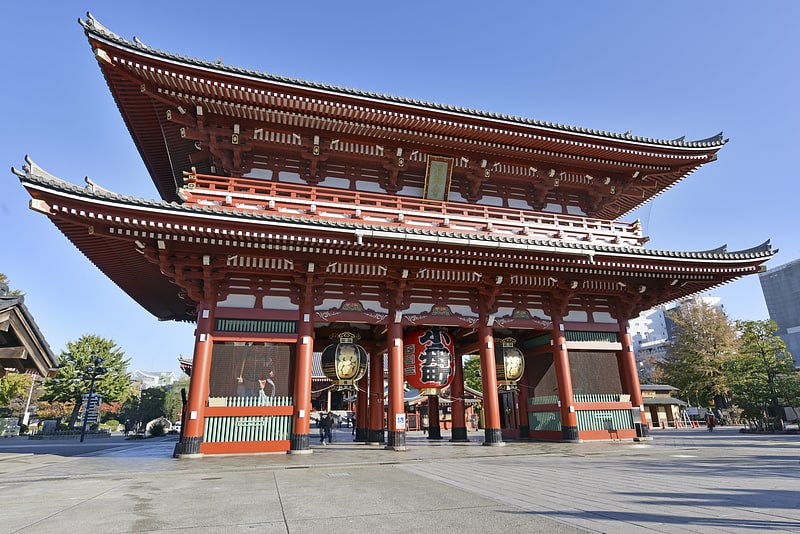
Also known as: 浅草寺
Historic temple to the goddess of mercy. Sensō-ji is an ancient Buddhist temple located in Asakusa, Tokyo, Japan. It is Tokyo's oldest temple, and one of its most significant. Formerly associated with the Tendai sect of Buddhism, it became independent after World War II. Adjacent to the temple is a five-story pagoda, the Asakusa Shinto shrine, as well as many shops with traditional goods in the Nakamise-dōri.
The Sensoji Kannon temple is dedicated to Kannon Bosatsu, the Bodhisattva of compassion, and is the most widely visited spiritual site in the world with over 30 million visitors annually.
The temple has a titanium tiled roof that maintains the historic image but is stronger and lighter.[7]
Address: 1, 111-0032, Taito-ku, Tokyo (台東区)
Ueno Park

Also known as: 上野恩賜公園
Large park with a zoo, a lake and museums. Ueno Park is a spacious public park in the Ueno district of Taitō, Tokyo, Japan. The park was established in 1873 on lands formerly belonging to the temple of Kan'ei-ji. Amongst the country's first public parks, it was founded following the western example as part of the borrowing and assimilation of international practices that characterizes the early Meiji period. The home of a number of major museums, Ueno Park is also celebrated in spring for its cherry blossoms and hanami. In recent times the park and its attractions have drawn over ten million visitors a year, making it Japan's most popular city park.[8]
Address: 5_20 Uenokoen, 110-0007 Tokyo (台東区)
Meiji Shrine
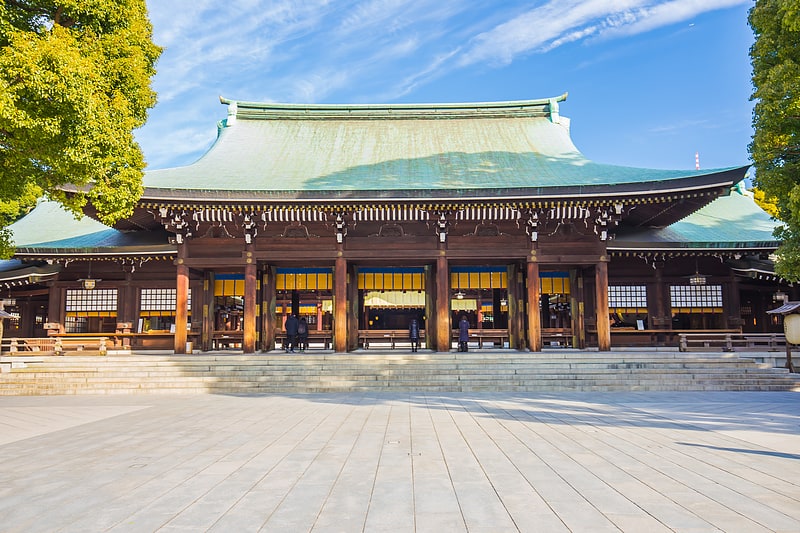
Also known as: 明治神宮
Famed Shinto shrine with a garden. Meiji Shrine, is a Shinto shrine in Shibuya, Tokyo, that is dedicated to the deified spirits of Emperor Meiji and his wife, Empress Shōken. The shrine does not contain the emperor's grave, which is located at Fushimi-momoyama, south of Kyoto.[9]
Address: 1-1 Yoyogikamizonochō, Shibuya City, 151-8557 Tokyo (渋谷区)
Edo Castle
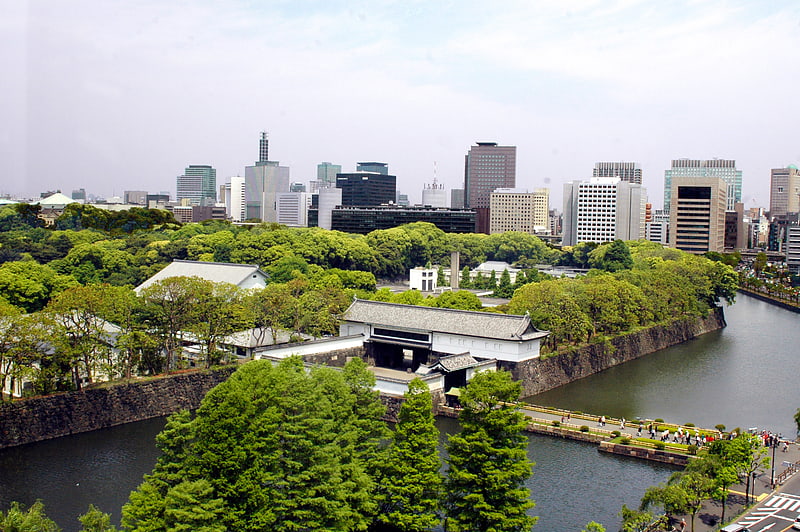
Also known as: 江戸城
Historical landmark with moats. Edo Castle, also known as Chiyoda Castle, is a flatland castle that was built in 1457 by Ōta Dōkan. It is today part of the Tokyo Imperial Palace and is in Chiyoda, Tokyo, Toshima District, Musashi Province. Tokugawa Ieyasu established the Tokugawa shogunate there. It was the residence of the shōgun and location of the shogunate, and also functioned as the military capital during the Edo period of Japanese history. After the resignation of the shōgun and the Meiji Restoration, it became the Tokyo Imperial Palace. Some moats, walls and ramparts of the castle survive to this day. However, the grounds were more extensive during the Edo period, with Tokyo Station and the Marunouchi section of the city lying within the outermost moat. It also encompassed Kitanomaru Park, the Nippon Budokan Hall and other landmarks of the surrounding area.[10]
Address: 1-1 Chiyoda, Chiyoda City, 100-8111 Tokyo (千代田区)
National Museum of Nature and Science
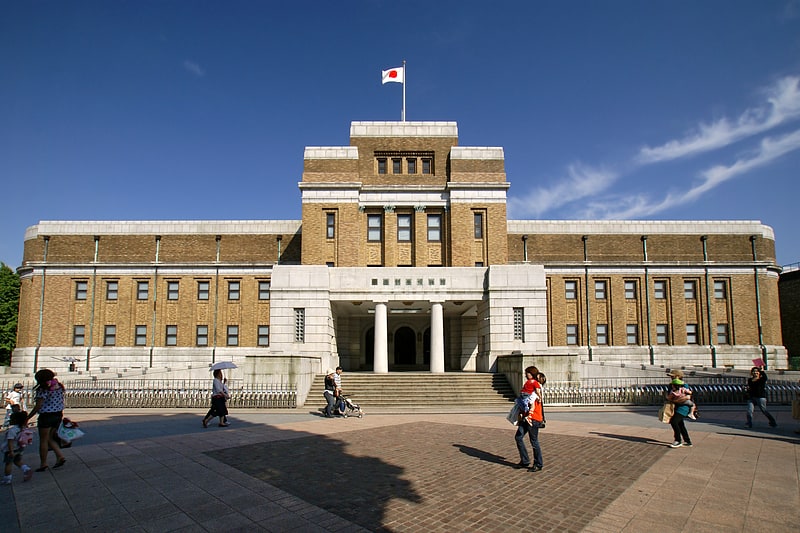
Also known as: 国立科学博物館
Museum with an array of science exhibits. The National Museum of Nature and Science is in the northeast corner of Ueno Park in Tokyo. The museum has exhibitions on pre-Meiji science in Japan. A life-size blue whale model and a steam locomotive are on display outside.[11]
Address: 7-20 Uenokōen, Taitō-ku, 110-8718 Tokyo (台東区)
Sakurada Gate
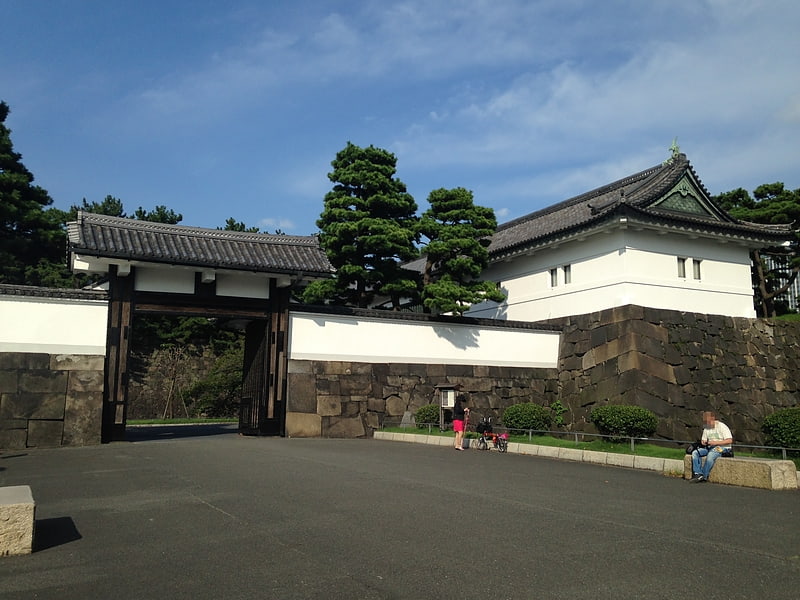
Sakurada Gate, is a gate at Tokyo Imperial Palace, in Tokyo, Japan. It was the location of the Sakuradamon Incident in 1860.
Opposite the gate of Sakurada Gate is the headquarters of the Tokyo Metropolitan Police Department, which shares "Sakurada Gate" as a metonym (akin to London's Scotland Yard).[12]
Tokyo Photographic Art Museum
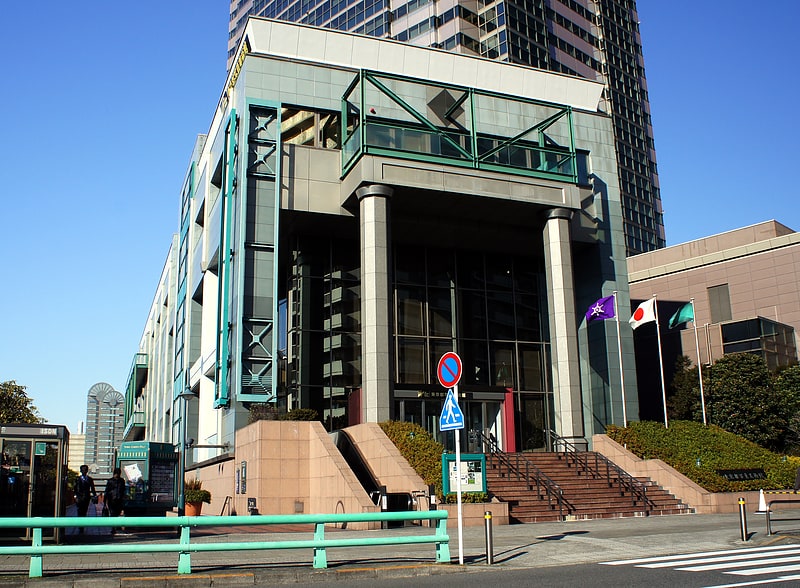
Also known as: 東京都写真美術館
Art museum in the special wards of Tokyo, Japan. The Tokyo Photographic Art Museum is an art museum concentrating on photography.
As the Tokyo Metropolitan Museum of Photography, it was founded by the Tokyo Metropolitan Government, and is in Meguro-ku, a short walk from Ebisu station in southwest Tokyo. The museum also has a movie theater.
Until 2014, the museum nicknamed itself "Syabi"; since 2016, it has called itself "Top Museum".[13]
Address: Meguro City, Mita, 1-chōme−13−3, 〒153-0062 Tokyo (渋谷区)
Yasukuni Shrine

Also known as: 靖国神社
Shrine dedicated to those killed in war. Yasukuni Shrine is a Shinto shrine located in Chiyoda, Tokyo. It was founded by Emperor Meiji in June 1869 and commemorates those who died in service of Japan from the Boshin War of 1868–1869 through the First Indochina War of 1946–1954. The shrine's purpose has been expanded over the years to include those who died in the wars involving Japan spanning from the entire Meiji and Taishō periods, and the earlier part of the Shōwa period.
The shrine lists the names, origins, birthdates, and places of death of 2,466,532 men, women, children, and various pet animals. Among those are 1,068 convicted war criminals, 14 of whom are A-Class (convicted of having been involved in the planning, preparation, initiation, or waging of the war). This has led to many controversies surrounding the shrine. Another memorial at the Honden (main hall) building commemorates anyone who died on behalf of Japan, and so includes Koreans and Taiwanese who served Japan at the time. In addition, the Chinreisha ("Spirit Pacifying Shrine") building is a shrine built to inter the souls of all the people who died during WWII, regardless of their nationality. It is located directly south of the Yasukuni Honden.
Various Shinto festivals are associated with the shrine, particularly in the spring and autumn seasons when portable Mikoshi shrines are rounded about honoring the ancestral gods of Japan. A notable image of the shrine is the Japanese Imperial Chrysanthemum featured on the gate curtains leading into the shrine. The current 13th High Priest incumbent of the shrine is Tatebumi Yamaguchi, who was appointed on 1 November 2018 after Kunio Kobori.[14]
Address: 3-chōme-1-1 Kudankita, Chiyoda City, 102-8246 Tokyo (千代田区)
Hamarikyu Gardens
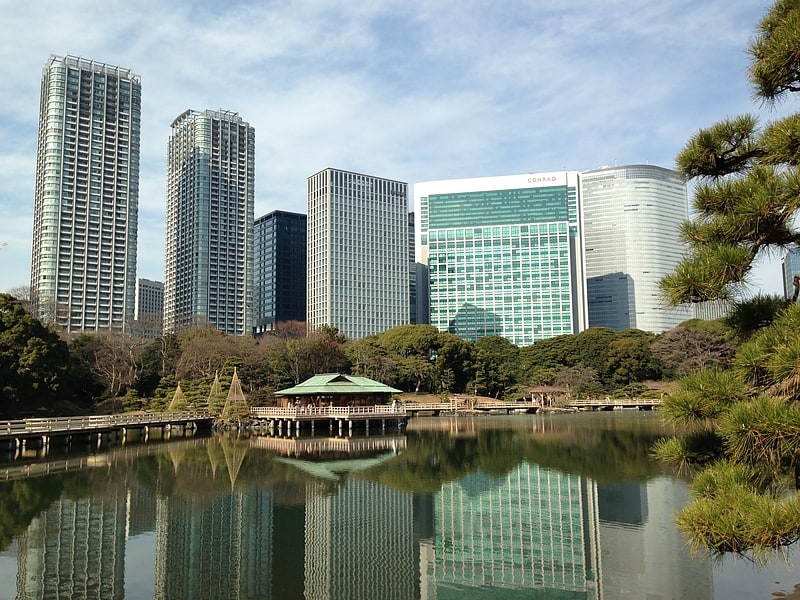
Also known as: 浜離宮恩賜庭園
Former Imperial gardens open to public. Hama-rikyū Gardens is a public park in Chūō ward, Tokyo, Japan. Located at the mouth of the Sumida River, it was opened to the public on April 1, 1946. A landscaped garden of 250,216 m² includes Shio-iri Pond, and the park is surrounded by a seawater moat filled by Tokyo Bay. It was remodeled as a public park on the site of a villa belonging to the ruling Tokugawa family in the 17th century.
At the centre of Shio-iri Pond is a teahouse, reached by three bridges, where visitors can enjoy refreshments, such as matcha and Japanese sweets, in the tea-ceremony style. The park includes a peony garden, a plum tree grove and fields with flowers for every season. Japanese falconry and aikido are demonstrated at New Year.[15]
Address: 1-1 Hamarikyūteien, Chuo City, 104-0046 Tokyo (中央区)
Roppongi Hills Mori Tower
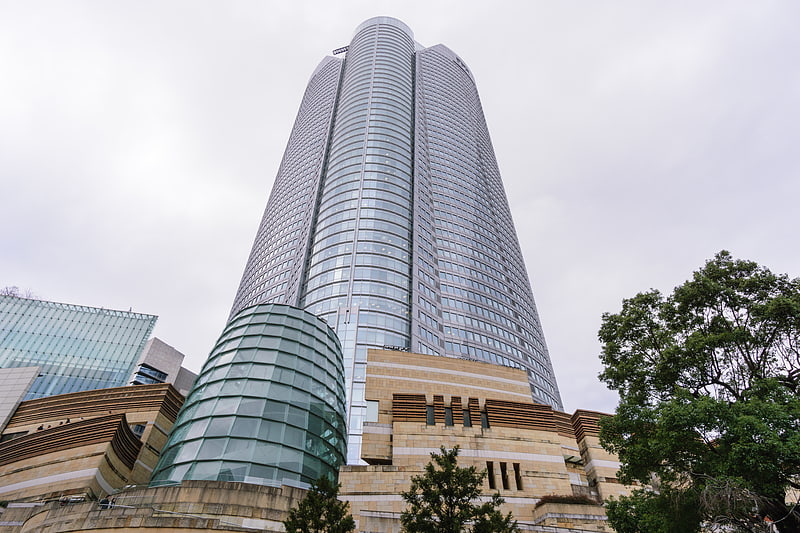
Skyscraper in the special wards of Tokyo, Japan. Roppongi Hills Mori Tower is a 54-story mixed-use skyscraper in Roppongi, Minato, Tokyo. Completed in 2003 and named after builder Minoru Mori, it is the centerpiece of the Roppongi Hills urban development. It is the sixth-tallest building in Tokyo at 238 meters. The tower has a floor space area of 379,408 square meters, making it one of the largest buildings in the world by this measure.
The Mori Tower building is primarily used for office space, but it also includes retail stores, restaurants and other attractions. The Mori Art Museum is located on the 53rd floor and visitors can view the city from observation decks on the 52nd and 54th floors. The headquarters of Mori Building Company are located in this building.[16]
Tochō

Also known as: 東京都庁舎
City Hall complex with observatories. The Tokyo Metropolitan Government Building, also referred to as the Tochō for short, is the seat of the Tokyo Metropolitan Government, which governs the special wards, cities, towns, and villages that constitute the Tokyo Metropolis.
Located in Shinjuku ward, the building was designed by architect Kenzo Tange. It consists of a complex of three structures, each taking up a city block. The tallest of the three is Tokyo Metropolitan Main building No.1, a tower 48 stories tall that splits into two sections at the 33rd floor. The building also has three levels below ground. The design of the building was meant to resemble an integrated circuit, while also evoking the look of a Gothic cathedral. It is the tallest city hall in the world.
The other two buildings in the complex are the eight-story Tokyo Metropolitan Assembly Building (including one underground floor) and Tokyo Metropolitan Main Building No. 2, which has 37 stories including three below ground.
The two panoramic observation decks, one in each tower on floor 45 (202 meters high), are free of charge to the public and contain gift shops and cafes. The observation decks are open between 9:30 and 23:00, but the two observation decks are open on alternate days.[17]
Address: Shinjuku-ku, Nishishinjuku, 2 Chome−8, 〒160-0023 Tokyo (新宿区)
Tokyo Skytree
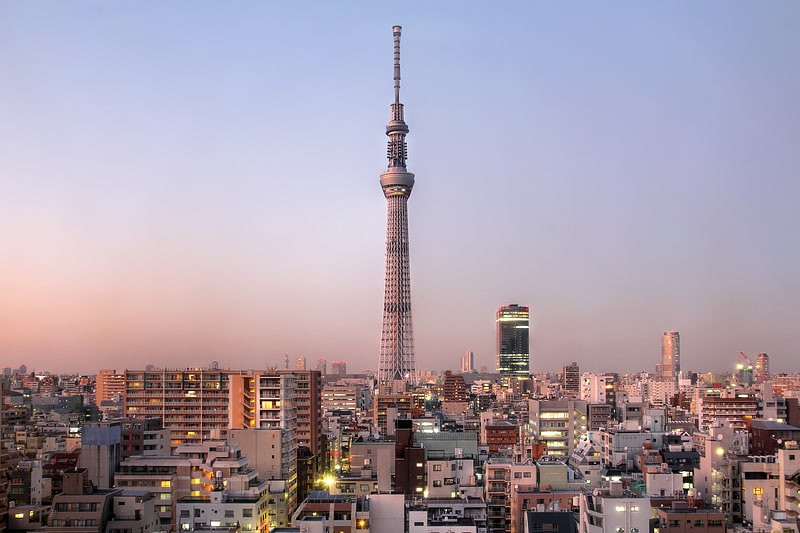
Also known as: 東京スカイツリー
Huge tower with an observation deck. Tokyo Skytree is a broadcasting and observation tower in Sumida, Tokyo. It became the tallest structure in Japan in 2010 and reached its full height of 634 meters in March 2011, making it the tallest tower in the world, displacing the Canton Tower, and the third tallest structure in the world after the Merdeka 118. It is also the tallest freestanding structure in the OECD.
The tower is the primary television and radio broadcast site for the Kantō region; the older Tokyo Tower no longer gives complete digital terrestrial television broadcasting coverage because it is surrounded by high-rise buildings. Skytree was completed on Leap Day, 29 February 2012, with the tower opening to the public on 22 May 2012. The tower is the centrepiece of a large commercial development funded by Tobu Railway (which owns the complex) and a group of six terrestrial broadcasters headed by NHK. Trains stop at the adjacent Tokyo Skytree Station and nearby Oshiage Station. The complex is seven kilometres (4+1⁄2 miles) northeast of Tokyo Station. In addition, there is the Sumida Aquarium in the "Tokyo Solamachi" complex.[18]
Address: 1丁目-1-2 押上 墨田区, 131-0045 Tokyo (墨田区)
Museum of Maritime Science
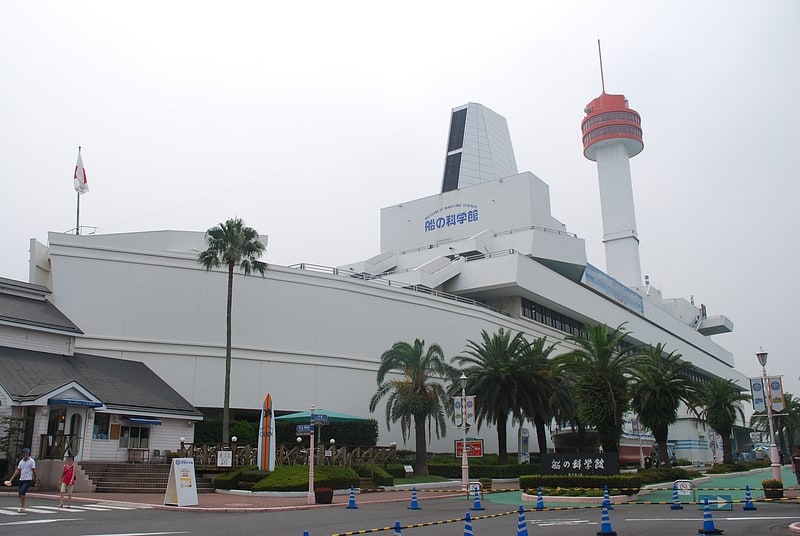
Also known as: 船の科学館
Museum in the special wards of Tokyo, Japan. The Museum of Maritime Science is a marine science museum located in Higashiyashio, Shinagawa, Tokyo on Odaiba island, Japan. Exhibits include Japanese boats, items related to the navy, shipping industry, fishing, sailing, maritime recreation, ship design and building, and the environment of the seas and oceans around Japan. The museum building itself is modelled after the British ocean liner Queen Elizabeth 2.
Outside the museum building are a number of exhibits including a large screw propeller, Ayumi I-Go Ocean Floor House, Tankai Submarine and PC-18 submersible, a wooden fishing boat from Kujūkuri, Osesaki lighthouse and Anorisaki Lighthouse.
Since May 1979 the icebreaker Sōya has been moored alongside the museum open to the public.[19]
Address: 3-1 Higashiyashio, 135-8587 Tokyo (江東区)
Meguro Parasitological Museum

Also known as: 目黒寄生虫館
Museum in the special wards of Tokyo, Japan. The Meguro Parasitological Museum is a small medical museum in the Meguro Ward in central Tokyo, Japan. The museum is devoted to parasites and the science of parasitology, and was founded in 1953 by Dr. Satoru Kamegai.[20]
Address: 4-1-1 Shimo-Meguro, 153-0064 Tokyo (目黒区)
Akasaka Palace
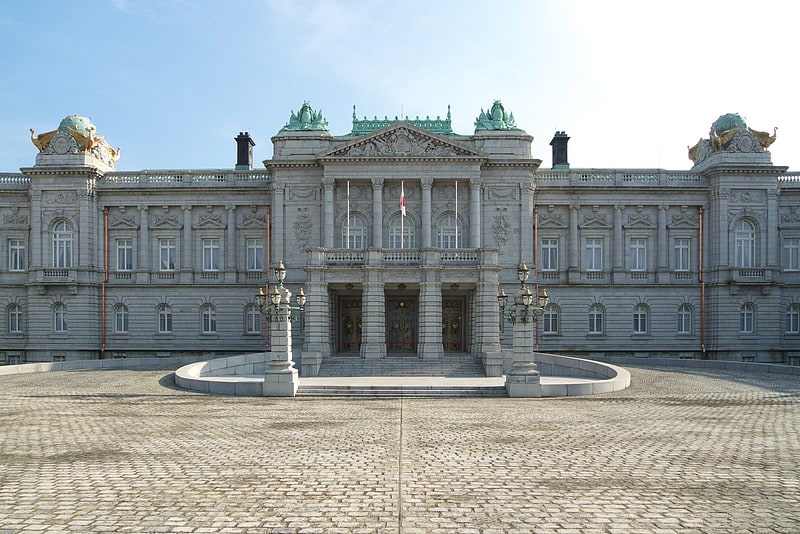
Also known as: 迎賓館
Building in the special wards of Tokyo, Japan. Akasaka Palace, or the State Guest House, is one of the two state guest houses of the Government of Japan. The other state guesthouse is the Kyoto State Guest House.
The palace was originally built as the Imperial Palace for the Crown Prince (東宮御所, Tōgū Gosho) in 1909. Today the palace is designated by the Government of Japan as an official accommodation for visiting state dignitaries. Located in the Moto-Akasaka, Minato, Tokyo, the building took on its present function in 1974, having previously been an imperial detached palace. In 2009 the palace was designated as a National Treasure of Japan.[21]
Address: 2-1 Motoakasaka, 107-0051 Tokyo (港区)
Roppongi
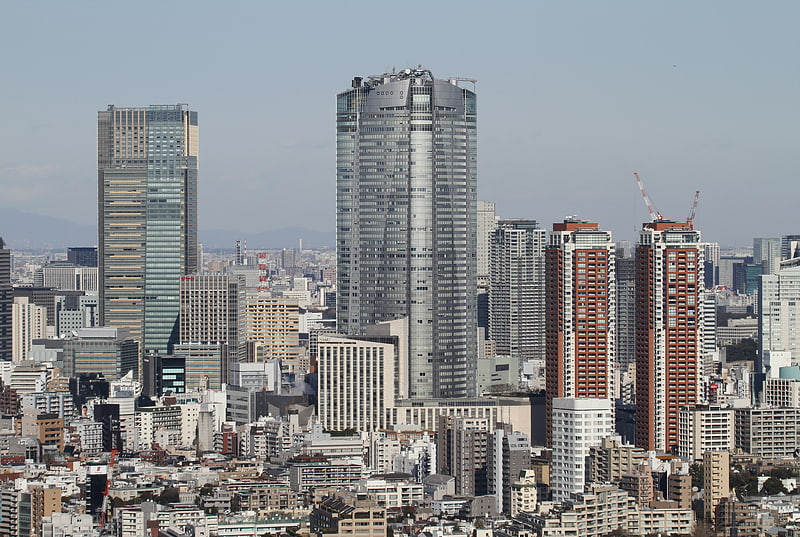
Also known as: 六本木
Happening nightlife and international art. Roppongi is a district of Minato, Tokyo, Japan, famous for the affluent Roppongi Hills development area and popular night club scene. A few foreign embassies are located near Roppongi, and the night life is popular with locals and foreigners alike. It is in the central part of Tokyo, south of Akasaka and north of Azabu.[22]
Thunder Dolphin

Also known as: サンダードルフィン
Roller coaster. Thunder Dolphin is a steel roller coaster at the Tokyo Dome City Attractions amusement park, which is part of Tokyo Dome City in Tokyo, Japan. The ride was designed and constructed by Intamin. At 80 metres tall, Thunder Dolphin is one of the tallest continuous circuit roller coasters in the world, currently ranked number 10. Following an incident in which a 25 centimetres long bolt fell from the ride while in motion on 5 December 2010, injuring a 9-year-old visitor, operation of the ride was suspended until 1 August 2013, when the ride reopened.
Thunder Dolphin's 1,066.8 metres (3,500 ft) long course passes through both a hole in the LaQua building, and through the Big-O, the world's first centerless Ferris wheel. Thunder Dolphin has a maximum speed of 130 kilometres per hour (81 mph).[23]
Ueno Zoo
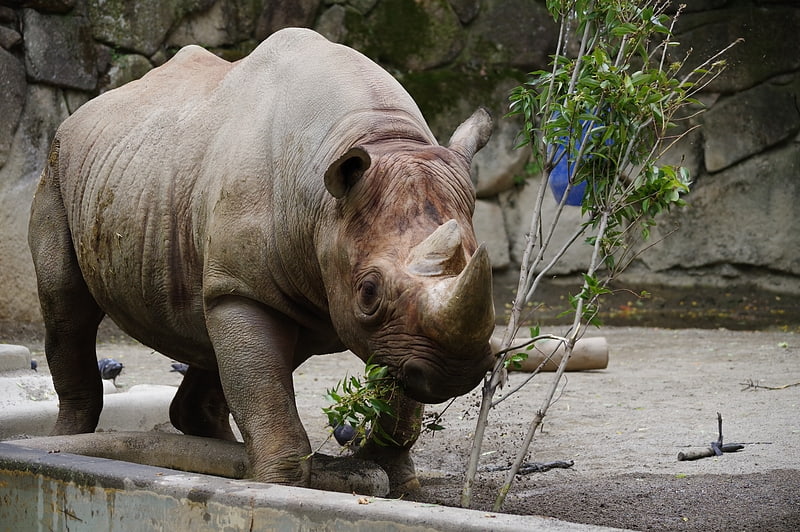
Also known as: 恩賜上野動物園
Zoo in the special wards of Tokyo, Japan. The Ueno Zoo is a 14.3-hectare zoo, managed by the Tokyo Metropolitan Government, and located in Taitō, Tokyo, Japan. It is Japan's oldest zoo, opened on March 20, 1882. It is a five-minute walk from the Park Exit of Ueno Station, with convenient access from Tokyo's public-transportation network. The Ueno Zoo Monorail, the first monorail in the country, connects the eastern and western parts of the grounds.
The zoo is in Ueno Park, a large urban park that is from home to museums, a small amusement park, and other attractions. The zoo is closed on Mondays (Tuesday if Monday is a holiday).[24]
Miraikan
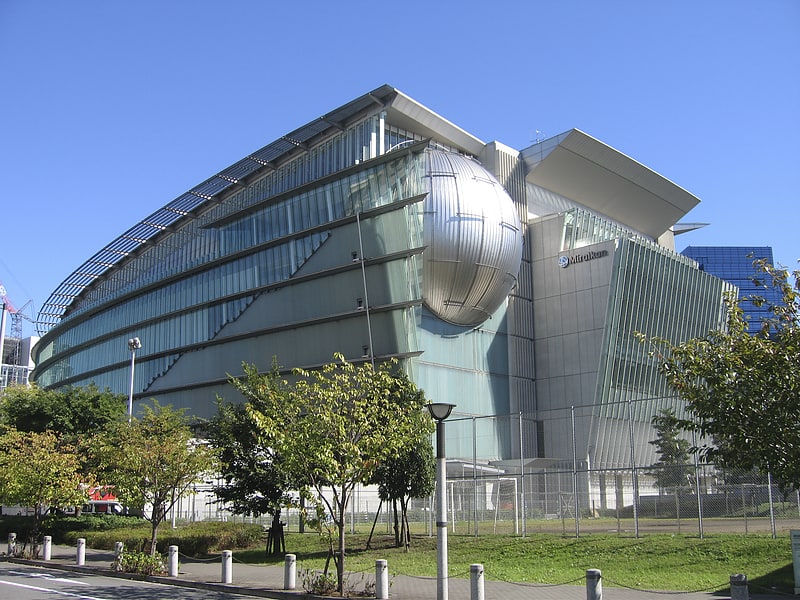
Also known as: 日本科学未来館
Interactive science exhibits . The National Museum of Emerging Science and Innovation, simply known as the Miraikan, is a museum created by Japan's Science and Technology Agency.
It was opened in 2001. It is situated in a new purpose-built building in the Odaiba District of Tokyo. It can be reached by the Yurikamome driverless fully automated transit system from downtown Tokyo in about 15 minutes.[25]
Address: 2-3-6 Aomi, 135-0064 Tokyo (江東区)
Kiyosumi Garden

Also known as: 清澄庭園
Garden in the special wards of Tokyo, Japan. Kiyosumi Garden is a traditional Japanese stroll garden located in Fukagawa, Tokyo. It was constructed along classic principles in 1878–85, during the Meiji Period, by the shipping financier and industrialist Iwasaki Yatarō. By subtle hints in path construction and placement the visitor is led on a walk around the lake. Water-worn boulders were brought in from all over Japan, to give the garden its character; hills and dry waterfalls were constructed with them and two sequences of them form stepping-stones across small inlets of the lake, which almost completely fills the garden, allowing a pathway of many picturesque episodes around its perimeter. In fact only a narrow band of perimeter planting screens the garden from the structures along Kiyosumi Dori. There are three big islands and a teahouse on the pond. The garden covers an area of about 81,000 square metres.[26]
Nikon Museum

Museum in the special wards of Tokyo, Japan. Nikon Museum is a museum of Nikon products, located at Nikon headquarters in Shinagawa, Tokyo, Japan.[27]
American Waterfront
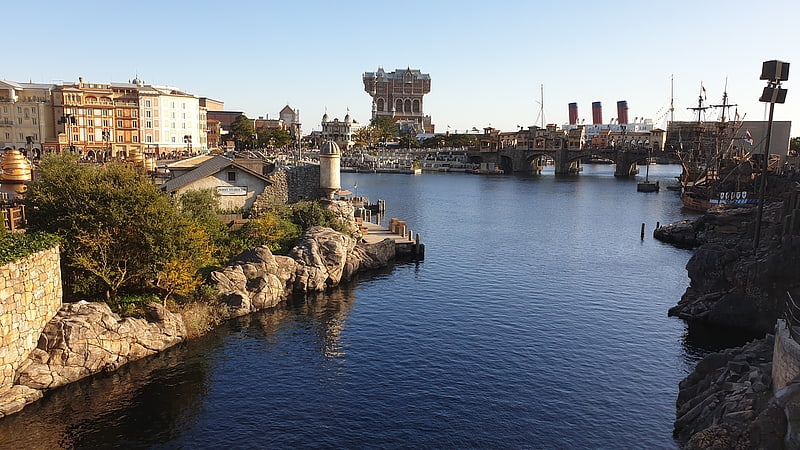
Also known as: アメリカンウォーターフロント
Theme park in Urayasu, Japan. American Waterfront is a "port-of-call" at Tokyo DisneySea in the Tokyo Disney Resort. It represents the Northeastern seaboard of the United States in the early 20th century, and features two themed areas, an Old Cape Cod section, and a New York Harbor section with an elaborate backstory.[28]
Journey to the Center of the Earth
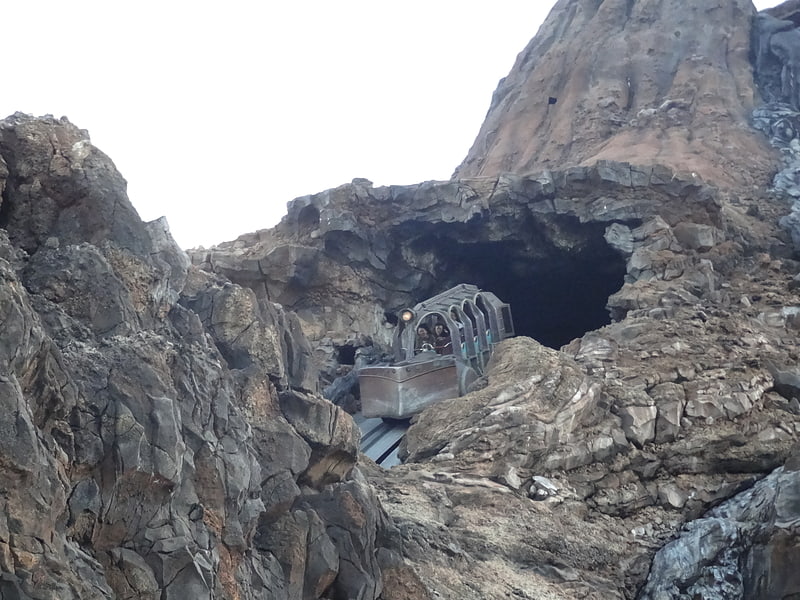
Also known as: センター・オブ・ジ・アース
Disney ride. Journey to the Center of the Earth is a high-speed slot car dark ride at the Tokyo DisneySea theme park in Urayasu, Chiba, Japan. One of the park's opening day attractions, it is located in the Jules Verne-themed Mysterious Island area of the park, and is loosely themed after Verne's 1864 novel of the same name. The attraction's ride system is based on the high speed slot car system originally created for the Test Track attraction opened in 1999 at Epcot in Walt Disney World. Original music for the ride was created by longtime Disney composer Buddy Baker.[29]
Tokyo Metropolitan Teien Art Museum
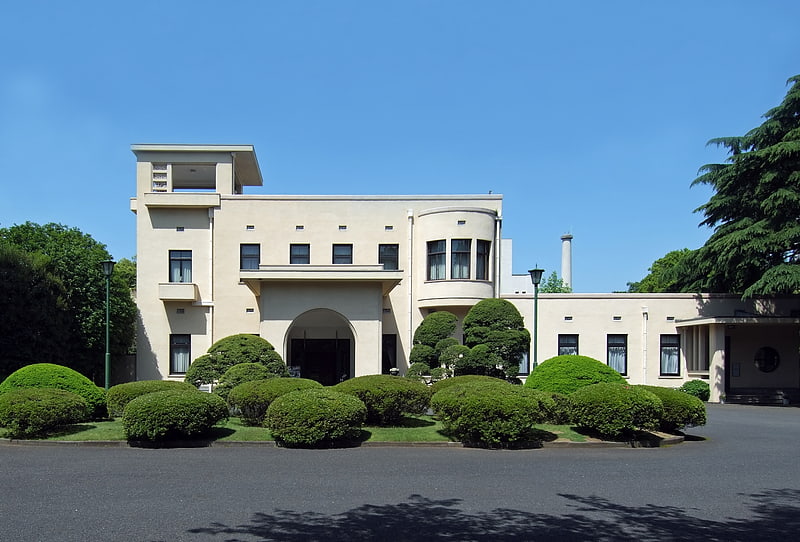
Also known as: 東京都庭園美術館
Museum in the special wards of Tokyo, Japan. The Tokyo Metropolitan Teien Art Museum is an art museum in Tokyo, Japan.
The museum is located in Minato ward, just east of Meguro Station. The Art Deco building, completed in 1933, has interiors designed by Henri Rapin and features decorative glass work by René Lalique.[30]
Address: 5-21-9 Shirokanedai, 108-0071 Tokyo (品川区)
Mega Web

Mega Web, or Megaweb, was a car theme park operated by Toyota in Odaiba's Palette Town, Tokyo, Japan. The Toyota City Showcase displays vehicles and has 1.3-km driving course for test driving. Ride Studio offers mini car driving and the Waku-Doki has simulated race track driving. The History Garage has a collection of 1950s–1970s models on display. Mega Web and the Historic Garage closed permanently on December 31, 2021, as part of Palette Town's anticipated redevelopment.[31]
Address: 1 Aomi, Koto-ku, Tokyo (江東区)
Zōjō-ji

Also known as: 増上寺
Buddhist temple complex dating to 1622. San'en-zan Zōjō-ji is a Jōdo-shū Buddhist temple in Tokyo, Japan. It is the main temple of the Jōdo-shū Chinzei sect of Buddhism in the Kantō region,.
Zōjō-ji is notable for its relationship with the Tokugawa clan, the rulers of Japan during the Edo period, with six of the Tokugawa shōguns being buried in the Taitoku-in Mausoleum in the temple grounds. Also, the temple's Sangadetsumon (main gate) is the oldest wooden building in Tokyo, dating from 1622. The original buildings, temples, mausoleums and the cathedral were destroyed by fire, natural disasters or air raids during World War II.
It is located in the Shiba neighborhood of Minato. The Shiba Park is built around the temple, with the Tokyo Tower standing beside it. In 2015 a Treasure Gallery was opened on the underground level of the Daiden (great hall), and it currently houses paintings of Kanō Kazunobu and a model of the Taitoku-in Mausoleum.[32]
Address: 4-7-35 Shibakoen, 105-0011 Tokyo (港区)
Aquatopia
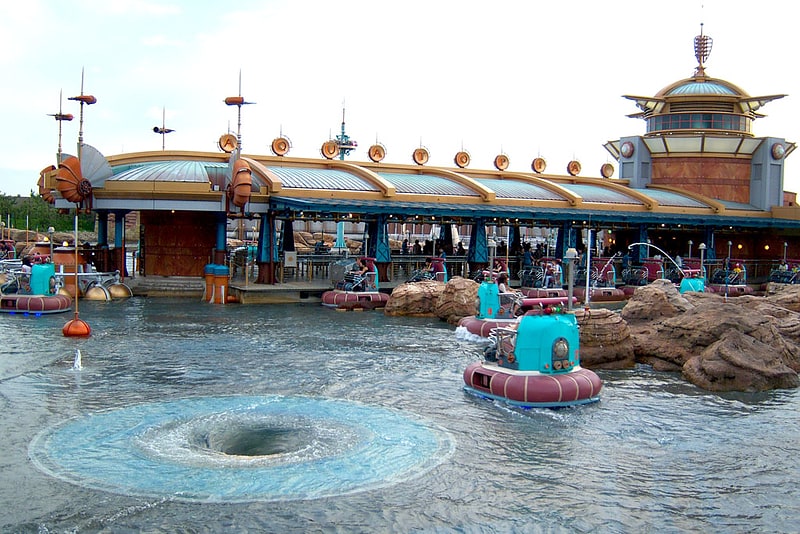
Also known as: アクアトピア
Disney ride. Aquatopia is an attraction at Tokyo DisneySea theme park at the Tokyo Disney Resort in Chiba, Japan. Located in the Port Discovery area of the park, it is the second attraction to use a trackless ride system designed by Walt Disney Imagineering. The trackless ride system uses computers to guide the vehicles throughout the ride.
It is considered to be the successor to both Disneyland's Motor Boat Cruise and the Autopia, from which Aquatopia received its name as homage. The ride consists of around three dozen vehicles designed to look like personal hovercraft which move independently from each other at quick speeds through a large water lagoon. The water in the lagoon is about 5 cm (2 inches) deep, as the vehicles actually roll along the shallow floor on wheels. The water is kept moving to create the illusion of depth, and occasional funnel drains give the appearance of foreboding whirlpools. Like the older attractions it is inspired by, Aquatopia is self-guided. Due to the ride technology, there are no visible tracks, giving the sensation of spontaneity and surprise to the attraction. There are two sides to the lagoon, which you board from a central boarding platform. During the summer, one side becomes a "wet course" while the other is the "dry course". The "wet course" adds the possibility of getting soaked by hidden water jets along the ride while the "dry course" is jet-free.[33]
Tokyo Dome
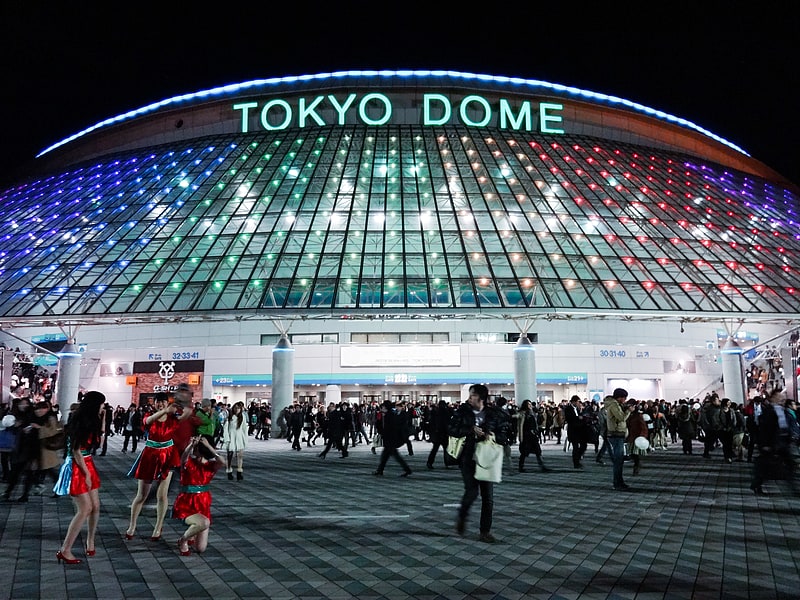
Also known as: 東京ドーム
Stadium in the special wards of Tokyo, Japan. Tokyo Dome is an indoor stadium in Bunkyo, Tokyo, Japan. Construction on the stadium began on May 16, 1985, and it opened on March 17, 1988. It was built on the site of the Velodrome, adjacent to the predecessor ballpark, Korakuen Stadium. It has a maximum total capacity of 57,000 depending on configuration, with an all-seating configuration of 42,000.
Tokyo Dome's original nickname was "The Big Egg", with some calling it the "Tokyo Big Egg". Its dome-shaped roof is an air-supported structure, a flexible membrane supported by slightly pressurizing the inside of the stadium. It was developed by Nikken Sekkei and Takenaka Corporation. It was modeled after the Hubert H. Humphrey Metrodome.
It is the home field of the Yomiuri Giants baseball team, and has also hosted music concerts, basketball, American football and association football games, as well as puroresu (pro-wrestling) matches, mixed martial arts events, kickboxing events, and monster truck races. It is also the location of the Japanese Baseball Hall of Fame which chronicles the history of baseball in Japan. It became the first Japanese venue with an American football attendance above 50,000.[34]
Address: 1 Chome-3-61 Kōraku, Bunkyō-ku, 112-0004 Tokyo (文京区)
Tokyo Metropolitan Government
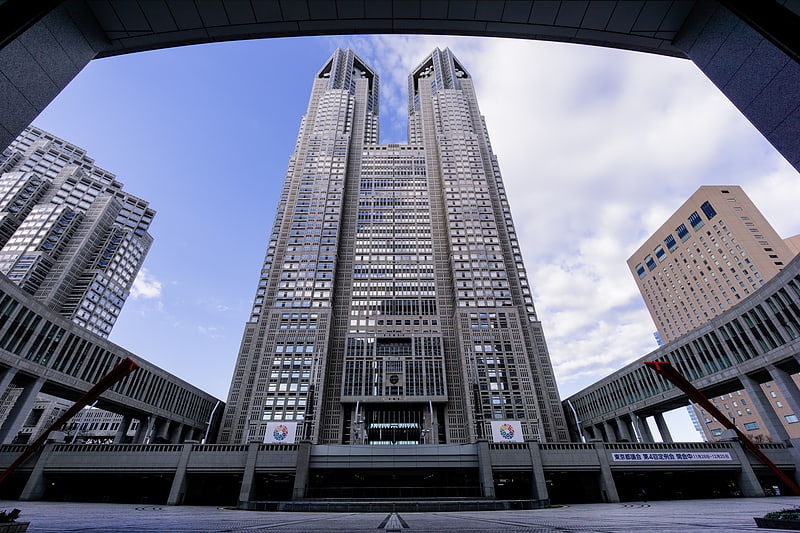
Also known as: 東京都庁
The Tokyo Metropolitan Government is the government of the Tokyo Metropolis. One of the 47 prefectures of Japan, the government consists of a popularly elected governor and assembly. The headquarters building is located in the ward of Shinjuku. The metropolitan government administers the special wards, cities, towns and villages that constitute part of the Tokyo Metropolis. With a population closing in on 14 million living within its boundaries, and many more commuting from neighbouring prefectures, the metropolitan government wields significant political power within Japan.[35]